A bit of Chevelle history
Case in point: The 1970 Chevy Chevelle SS396 is one of the most coveted muscle cars of all time — you know, the red and black one you see at every car show. The hot Chevelle made 350 horsepower and could go from zero to 60 in 6.8 seconds. In other words, it would get completely embarrassed by the new Focus RS, which gets 350 horsepower from its turbo four and makes the zero to 60 jump in 4.6 seconds. And that’s not saying anything about the other areas where the Focus has beaten the Chevy, such as quality, construction, reliability, fit and finish, handling, and safety.
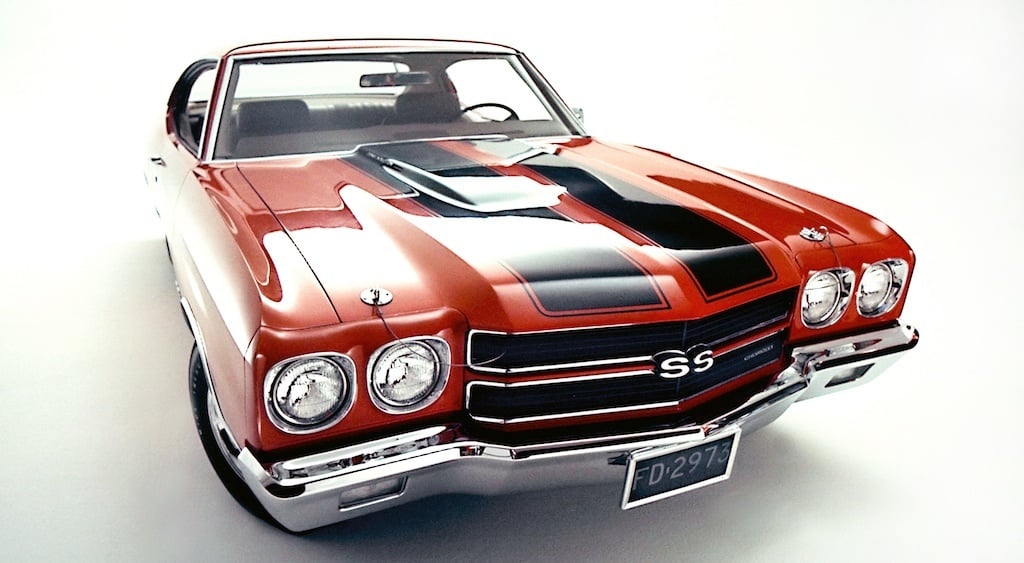 1970 Chevrolet Chevelle SS | Chevrolet
1970 Chevrolet Chevelle SS | Chevrolet
So the good old days aren’t exactly transferrable to the 21st century. That’s OK. Today, you see all kinds of restomod updates on classic iron. Inside many classic muscle cars lies newer technology, such as disc brakes, power steering, electronic ignition, and revised suspension components. These modifications keep the spirit of the car intact and ensure the car gets driven, which, after all, is what it was meant to do. But preservation has become increasingly important in collector car circles, and we completely understand why. Keeping a car as it was when it rolled out of the factory makes it an important link to our automotive past. But if you’re going down that route, be prepared to make some compromises because they don’t drive like modern cars. We took a look at the muscle car era and came up with 10 cars that despite their reputation were just fundamentally flawed. Some can be fixed with a little modification. Others are too valuable to fix at this point.
 Source: Chevrolet
Source: Chevrolet
So far as classic muscle cars go, it’s one of The Greats. You can’t mention GTO, Mustang, Camaro, ‘Cuda, Charger, 442, and Nova without mentioning the Chevelle. Back then, Chevy’s groundbreaking midsize car was a performance car for the masses. On top of its iconic semi-fastback coupe design, there were also convertibles, conventional four-door sedans, and even station wagon models available. It was bigger than a Mustang or Camaro, more comfortable than a Nova, and available with some of the largest engines money could buy. For 13 years, the car was Chevy’s sales bread-and-butter, then it disappeared without a trace. In the 39 years since the last one rolled off the production line,
Never talk of bringing it back
In the early ’60s, the auto world was changing fast. The days when you could have something like the ’58 Chevy lineup — one model with different body styles and trims and call it a day — were over. Now you had new classifications, like compact (Ford Falcon, Chevy II/Nova, Plymouth Valiant), midsize (Ford Fairlane, Plymouth Belvedere), and full-size (Chevy Impala, Ford Galaxie, Plymouth Fury) cars. Chevy needed a true midsize model to compete, and using its wildly popular 1955-’57 models as a template (both the new car and ’50s models would share a 115-inch wheelbase), released the all-new Chevelle line in late 1963 as a ’64 model.
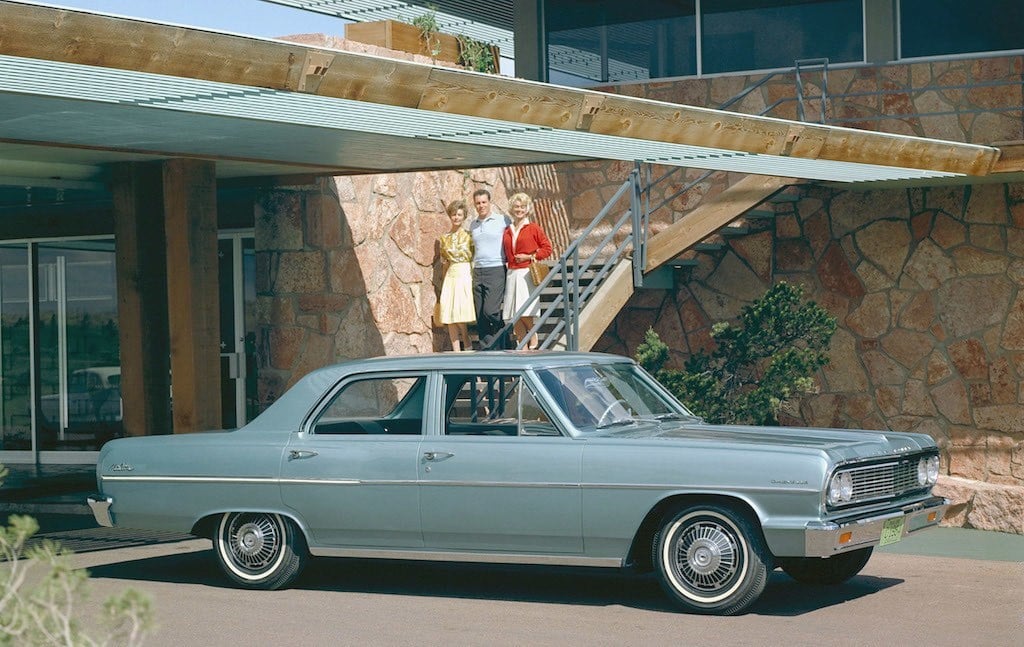 Source: Chevrolet
Source: Chevrolet
The model — especially the coupe — became a major sales success for Chevy. Slotting perfectly between the Chevy II/Nova and Impala in both size and price, the car’s slab-sided good looks and versatility (coupe, two- and four-door sedans and station wagons, all available with either a straight-six or V made it the ideal for a changing world. At the top of the Chevelle range sat the Malibu, and Chevy even brought the El Camino back from a three-year hiatus and made it part of the lineup.
made it the ideal for a changing world. At the top of the Chevelle range sat the Malibu, and Chevy even brought the El Camino back from a three-year hiatus and made it part of the lineup.
Of course, a big reason the world was changing in 1964 was the Mustang, and while GM was caught off guard by the introduction of Ford’s ponycar, its first response in the summer of ’64 was to drop a 300-horse 327-cubic-inch V8 under the Chevelle’s hood, making it Chevy’s first true foray into muscle car territory.
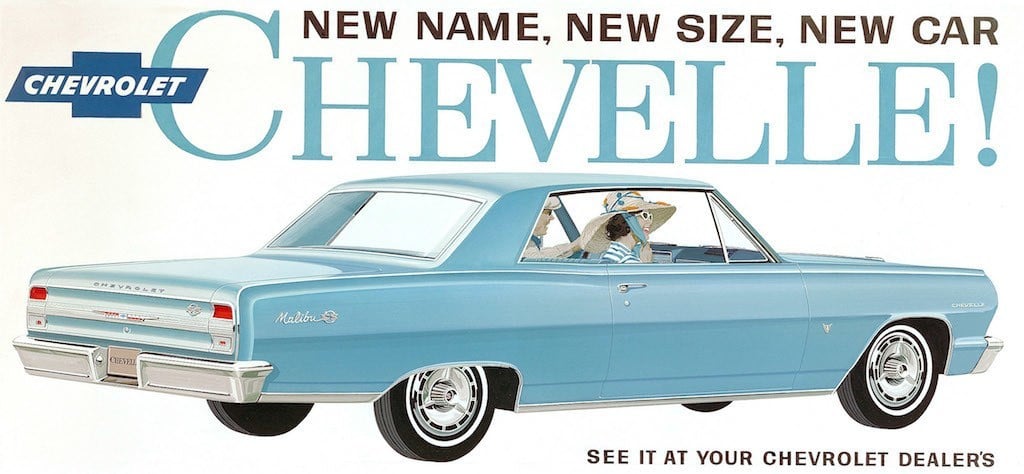 Source: Chevrolet
Source: Chevrolet
The Chevelle’s sporty transformation continued into 1965, when Chevy introduced the Super Sport package for the car. For an extra $150, buyers would get some extra trim pieces, SS badges, and hubcaps off an Impala SS to go along with their V8-powered car — an option that would attract over 76,000 takers in its first year. But the real ringer was the 350-horsepower, L79-equipped SS, an option that added over $1,500 to the sticker (more than half the car’s base price). Sadly, only 201 were made for ’65.
The Chevelle got its first redesign in 1966, ditching Chevy’s smooth lines from the early part of the decade for muscular rear haunches and an aggressively canted front end. The popular SS was spun off into its own model, joining the base car and range-topping Malibu to form the new Chevelle lineup. Available as a coupe and convertible, the SS was the highest profile version of the car, with its revised suspension, fake hood scoops, and added brightwork. But there was plenty of power to back up the looks; a trio of 396-cubic-inch V8s were available: a 325-horse version, a 360-horse, and 375. The Muscle car game was heating up quickly, and the Chevelle was in the center of it all.
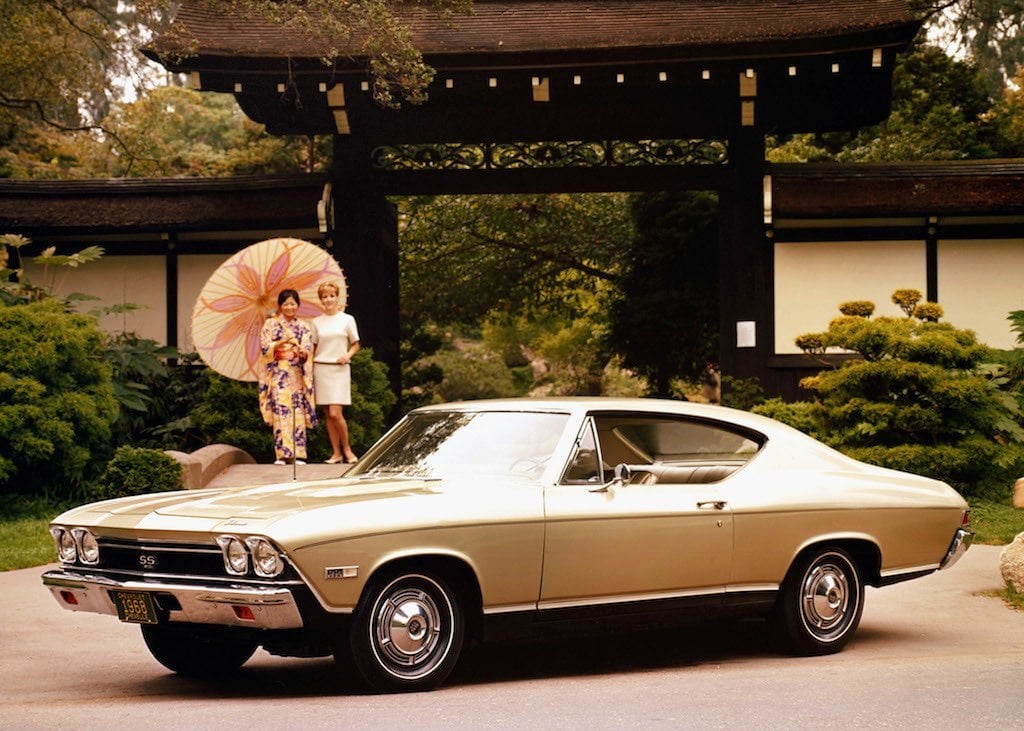 Source: Chevrolet
Source: Chevrolet
After largely remaining unchanged for ’67, the Chevelle was all-new for ’68, and for many gearheads, that’s when it hit its stride. GM’s sleek new A-Body cars (including the GTO, Buick Skylark, and Olds Cutlass/442) were some of the most muscular looking cars on the market, and buyers flocked to dealerships for them. The sedans, wagons, El Camino, and more comfortable Malibus remained, but by now, the only Chevelles anyone really talked about were the big SS models.
By 1969, the Chevelle lineup was the best-selling midsize car in America. Sure, you could get it with a 140-horsepower inline-six, but if you had an extra $347.60, you’d be foolish not to take home one of the nearly 87,000 SS 396 coupes Chevy built that year. The end of the decade proved to be the zenith of the original muscle car arms race too, and while the new Camaro was beginning to steal the Chevelle’s glory, the car became Chevy’s performance nuclear option nonetheless.
 Source: Chevrolet
Source: Chevrolet
In 1970, the base SS 396 made 350 horsepower — the same amount the hottest Chevelle did just five years earlier. But there was a lot of room above that figure now; Chevy now offered its big-block 454-cubic-inch V8 for the car. With its Cowl-Induction hood scoop (which opened under heavy acceleration to help the engine breathe), the standard 454 made an impressive 360 horsepower. But you could also buy the LS-6 version, which made an advertised 450 horsepower and 500 pound-feet of torque. By then, the insurance industry had begun to crack down on muscle cars, so it was an open secret that Chevy had underrated the LS-6’s performance. It really made closer to 500 horsepower.
By 1971, the party was already crashing to a halt. Soaring insurance premiums, and safety and emissions laws were forcing companies to abandon their muscle cars left and right. The 454 remained, but the 500-horse version was long gone. On the lower end, high-performance V8 options were beginning to disappear too, and by ’72, the hottest Chevelle was putting out just 270 horsepower.
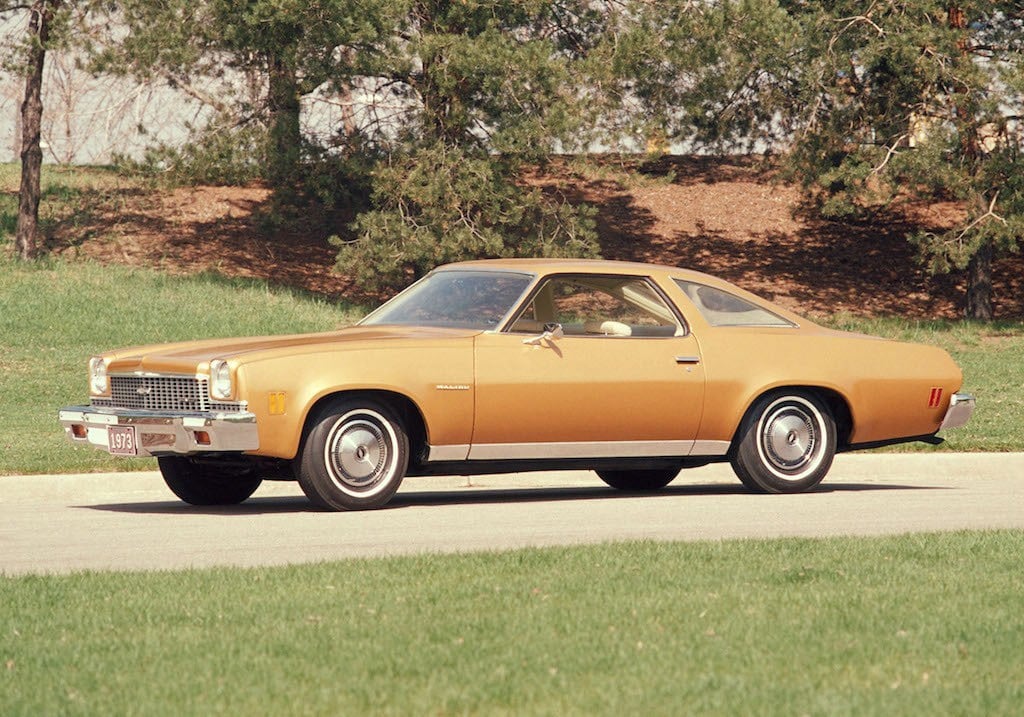 Source: Chevrolet
Source: Chevrolet
In many ways, the Chevelle sowed the seeds of its own demise. In 1970, Chevy launched a new A-Body model largely based on the car called the Monte Carlo. Offering the “personal luxury” amenities and looks of cars like the Lincoln Mark III and Cadillac Eldorado but at an affordable Chevy price, the car was a massive success, helping to launch the Personal Luxury Coupe segment, the most dominant body style of the 1970s. As these new coupes rose in popularity, and the Camaro firmly took over as Chevy’s mass-market performance car, the Chevelle quickly lost its luster. It was redesigned in 1973, but despite a strong showing in NASCAR events throughout the decade, street performance was largely gone, and in a growing field of plus coupes and new midsize models, the car became an afterthought.
The last Chevelles rolled off the assembly line in early 1977. For ’78, they had been replaced by an all-new, standalone Malibu. With its slab-sided, understated good looks and customizable chassis, the ’78 to ’83 Malibu largely picked up where the original left off, and it nobly served as Chevy’s last V8-powered rear-wheel drive midsize offering.
Today, the plush Malibus, four-door sedans, and station wagon Chevelles are largely forgotten, leaving the high-performance coupes of the ’60s and ’70s as the keeper of the nameplate’s legacy. Chevy brought back the Malibu name in 1997 for its all-new midsize offering, and while it’s been a perennial sales success for the brand, it hasn’t exactly recaptured the sporty looks and affordable comfort of its midcentury ancestors. Looking at the few ups and many downs of the modern Malibu, maybe it’s a good thing that the Chevelle hasn’t come back. With a name that iconic, it’s probably best we remember it for its greatness, and not meddle with a good thing.
 1970 Chevrolet Chevelle SS | Chevrolet
1970 Chevrolet Chevelle SS | ChevroletSo the good old days aren’t exactly transferrable to the 21st century. That’s OK. Today, you see all kinds of restomod updates on classic iron. Inside many classic muscle cars lies newer technology, such as disc brakes, power steering, electronic ignition, and revised suspension components. These modifications keep the spirit of the car intact and ensure the car gets driven, which, after all, is what it was meant to do. But preservation has become increasingly important in collector car circles, and we completely understand why. Keeping a car as it was when it rolled out of the factory makes it an important link to our automotive past. But if you’re going down that route, be prepared to make some compromises because they don’t drive like modern cars. We took a look at the muscle car era and came up with 10 cars that despite their reputation were just fundamentally flawed. Some can be fixed with a little modification. Others are too valuable to fix at this point.
 Source: Chevrolet
Source: ChevroletSo far as classic muscle cars go, it’s one of The Greats. You can’t mention GTO, Mustang, Camaro, ‘Cuda, Charger, 442, and Nova without mentioning the Chevelle. Back then, Chevy’s groundbreaking midsize car was a performance car for the masses. On top of its iconic semi-fastback coupe design, there were also convertibles, conventional four-door sedans, and even station wagon models available. It was bigger than a Mustang or Camaro, more comfortable than a Nova, and available with some of the largest engines money could buy. For 13 years, the car was Chevy’s sales bread-and-butter, then it disappeared without a trace. In the 39 years since the last one rolled off the production line,
Never talk of bringing it back
In the early ’60s, the auto world was changing fast. The days when you could have something like the ’58 Chevy lineup — one model with different body styles and trims and call it a day — were over. Now you had new classifications, like compact (Ford Falcon, Chevy II/Nova, Plymouth Valiant), midsize (Ford Fairlane, Plymouth Belvedere), and full-size (Chevy Impala, Ford Galaxie, Plymouth Fury) cars. Chevy needed a true midsize model to compete, and using its wildly popular 1955-’57 models as a template (both the new car and ’50s models would share a 115-inch wheelbase), released the all-new Chevelle line in late 1963 as a ’64 model.
 Source: Chevrolet
Source: ChevroletThe model — especially the coupe — became a major sales success for Chevy. Slotting perfectly between the Chevy II/Nova and Impala in both size and price, the car’s slab-sided good looks and versatility (coupe, two- and four-door sedans and station wagons, all available with either a straight-six or V
Of course, a big reason the world was changing in 1964 was the Mustang, and while GM was caught off guard by the introduction of Ford’s ponycar, its first response in the summer of ’64 was to drop a 300-horse 327-cubic-inch V8 under the Chevelle’s hood, making it Chevy’s first true foray into muscle car territory.
 Source: Chevrolet
Source: ChevroletThe Chevelle’s sporty transformation continued into 1965, when Chevy introduced the Super Sport package for the car. For an extra $150, buyers would get some extra trim pieces, SS badges, and hubcaps off an Impala SS to go along with their V8-powered car — an option that would attract over 76,000 takers in its first year. But the real ringer was the 350-horsepower, L79-equipped SS, an option that added over $1,500 to the sticker (more than half the car’s base price). Sadly, only 201 were made for ’65.
The Chevelle got its first redesign in 1966, ditching Chevy’s smooth lines from the early part of the decade for muscular rear haunches and an aggressively canted front end. The popular SS was spun off into its own model, joining the base car and range-topping Malibu to form the new Chevelle lineup. Available as a coupe and convertible, the SS was the highest profile version of the car, with its revised suspension, fake hood scoops, and added brightwork. But there was plenty of power to back up the looks; a trio of 396-cubic-inch V8s were available: a 325-horse version, a 360-horse, and 375. The Muscle car game was heating up quickly, and the Chevelle was in the center of it all.
 Source: Chevrolet
Source: ChevroletAfter largely remaining unchanged for ’67, the Chevelle was all-new for ’68, and for many gearheads, that’s when it hit its stride. GM’s sleek new A-Body cars (including the GTO, Buick Skylark, and Olds Cutlass/442) were some of the most muscular looking cars on the market, and buyers flocked to dealerships for them. The sedans, wagons, El Camino, and more comfortable Malibus remained, but by now, the only Chevelles anyone really talked about were the big SS models.
By 1969, the Chevelle lineup was the best-selling midsize car in America. Sure, you could get it with a 140-horsepower inline-six, but if you had an extra $347.60, you’d be foolish not to take home one of the nearly 87,000 SS 396 coupes Chevy built that year. The end of the decade proved to be the zenith of the original muscle car arms race too, and while the new Camaro was beginning to steal the Chevelle’s glory, the car became Chevy’s performance nuclear option nonetheless.
 Source: Chevrolet
Source: ChevroletIn 1970, the base SS 396 made 350 horsepower — the same amount the hottest Chevelle did just five years earlier. But there was a lot of room above that figure now; Chevy now offered its big-block 454-cubic-inch V8 for the car. With its Cowl-Induction hood scoop (which opened under heavy acceleration to help the engine breathe), the standard 454 made an impressive 360 horsepower. But you could also buy the LS-6 version, which made an advertised 450 horsepower and 500 pound-feet of torque. By then, the insurance industry had begun to crack down on muscle cars, so it was an open secret that Chevy had underrated the LS-6’s performance. It really made closer to 500 horsepower.
By 1971, the party was already crashing to a halt. Soaring insurance premiums, and safety and emissions laws were forcing companies to abandon their muscle cars left and right. The 454 remained, but the 500-horse version was long gone. On the lower end, high-performance V8 options were beginning to disappear too, and by ’72, the hottest Chevelle was putting out just 270 horsepower.
 Source: Chevrolet
Source: ChevroletIn many ways, the Chevelle sowed the seeds of its own demise. In 1970, Chevy launched a new A-Body model largely based on the car called the Monte Carlo. Offering the “personal luxury” amenities and looks of cars like the Lincoln Mark III and Cadillac Eldorado but at an affordable Chevy price, the car was a massive success, helping to launch the Personal Luxury Coupe segment, the most dominant body style of the 1970s. As these new coupes rose in popularity, and the Camaro firmly took over as Chevy’s mass-market performance car, the Chevelle quickly lost its luster. It was redesigned in 1973, but despite a strong showing in NASCAR events throughout the decade, street performance was largely gone, and in a growing field of plus coupes and new midsize models, the car became an afterthought.
The last Chevelles rolled off the assembly line in early 1977. For ’78, they had been replaced by an all-new, standalone Malibu. With its slab-sided, understated good looks and customizable chassis, the ’78 to ’83 Malibu largely picked up where the original left off, and it nobly served as Chevy’s last V8-powered rear-wheel drive midsize offering.
Today, the plush Malibus, four-door sedans, and station wagon Chevelles are largely forgotten, leaving the high-performance coupes of the ’60s and ’70s as the keeper of the nameplate’s legacy. Chevy brought back the Malibu name in 1997 for its all-new midsize offering, and while it’s been a perennial sales success for the brand, it hasn’t exactly recaptured the sporty looks and affordable comfort of its midcentury ancestors. Looking at the few ups and many downs of the modern Malibu, maybe it’s a good thing that the Chevelle hasn’t come back. With a name that iconic, it’s probably best we remember it for its greatness, and not meddle with a good thing.
__________________
Keystone Motor Club (Founded 2012)... Free car show Every 3rd Saturday, newsletter is
https://www.tamparacing.com/forums/e...-car-club.html
Keystone picture gallery is here:
https://carstoshow.com/eventdetails.aspx?eventid=93202
Veterans and Friends on First Saturday...Some pictures....
https://carstoshow.com/registerevent...eventid=102331
Port Richey Rod Run at Coast Buick GMC
https://carstoshow.com/registerevent.aspx?eventid=99114
50's Diner US19.... A Florida Attraction.
1730 US-19, Holiday Fl 34691 click: https://www.tamparacing.com/forums/t...-racing.html CHRA sanctioned cruise-in.
Cruise-In; Free; Every Saturday 5-8PM plus 10% off the whole menu to cruisers
50's Diner pictures are here: https://carstoshow.com/eventdetails.aspx?eventid=93194
All Cars Every 2nd Saturday Free Breakfast: Since 2015 and more. click: https://www.tamparacing.com/forums/e...ast-tampa.html
Tampa Racing.com covers the Tampa car scene and supports many fund raisers, worthy causes and events that enrich our community. We hope you enjoy them all.
What do I do? ---- on-site *Aftermarket* spring/suspension installations --- on-site impact wrenching---street lowering with your own stock springs...........True Bi-xenon HID projector headlight conversions........ Much more at Bob's Garage!
https://www.tamparacing.com/forums/b...ontact-us.html
https://www.tamparacing.com/forums/b...e-senor-honda/
Keystone Motor Club (Founded 2012)... Free car show Every 3rd Saturday, newsletter is
https://www.tamparacing.com/forums/e...-car-club.html
Keystone picture gallery is here:
https://carstoshow.com/eventdetails.aspx?eventid=93202
Veterans and Friends on First Saturday...Some pictures....
https://carstoshow.com/registerevent...eventid=102331
Port Richey Rod Run at Coast Buick GMC
https://carstoshow.com/registerevent.aspx?eventid=99114
50's Diner US19.... A Florida Attraction.
1730 US-19, Holiday Fl 34691 click: https://www.tamparacing.com/forums/t...-racing.html CHRA sanctioned cruise-in.
Cruise-In; Free; Every Saturday 5-8PM plus 10% off the whole menu to cruisers
50's Diner pictures are here: https://carstoshow.com/eventdetails.aspx?eventid=93194
All Cars Every 2nd Saturday Free Breakfast: Since 2015 and more. click: https://www.tamparacing.com/forums/e...ast-tampa.html
Tampa Racing.com covers the Tampa car scene and supports many fund raisers, worthy causes and events that enrich our community. We hope you enjoy them all.
What do I do? ---- on-site *Aftermarket* spring/suspension installations --- on-site impact wrenching---street lowering with your own stock springs...........True Bi-xenon HID projector headlight conversions........ Much more at Bob's Garage!
https://www.tamparacing.com/forums/b...ontact-us.html
https://www.tamparacing.com/forums/b...e-senor-honda/
Thread
Thread Starter
Forum
Replies
Last Post
FearThe4Doors
Chrysler, Dodge, Plymouth, Eagle Tech
6
02-09-2019 12:38 AM









